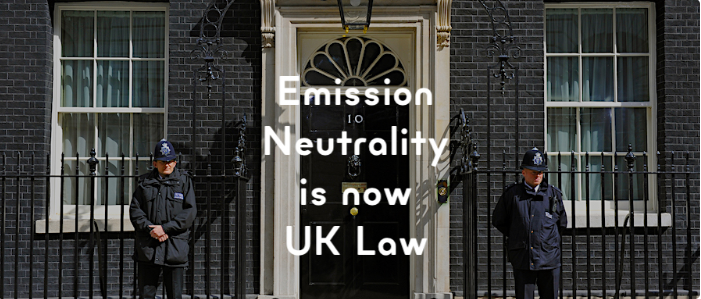What This Means for Datacenters and HPC
News breaks hard and fast these days. Embattled British Prime Minister Theresa May – who struggled mightily with Brexit – has turned to create a new signature achievement prior to leaving office. Rarely has a piece of legislation come to the fore and been approved so rapidly.
The Prime Minister announced on June 12th of this year that the UK was going to become emission neutral by 2050. This makes the UK the first major industrialized economy to do so. And though that seems a long way off, the steps to get there will be decidedly incremental.
Getting to Zero Emissions
There are several ways that this emission neutrality can be achieved. Certainly, emissions themselves can be reduced through cleaner business and industrial practices and environmental controls. But the economy can also be shifted more towards nuclear power and renewable energy sources. Existing emissions that cannot be eliminated effectively can be offset by various means (carbon credit trading, forestry, etc.). There are even methods of carbon and waste energy/heat recapture (more on this in a minute).
But – by far – the most effective method is to reduce emissions directly. But the trick is to accomplish this without diminishing productivity. In other words, find ways through advancing technology to produce more value using less energy in the first place at a cost that is less than the value of the energy saved. It transforms energy savings and emission neutrality into a net ROI.
Datacenters Are a BIG Part of the Problem AND the Solution
I know that this might seem a tad bit biased since packing more compute power into smaller spaces while consuming less energy is our business model. But think of it a different way.
In the US alone, datacenters are set to consume 139 terawatt-hours in 2020 (139 billion kilowatt-hours) – that’s about 3.5% of all the electricity produced there. Globally, estimates range between 6% and 7%. As climate and emission requirements start taking hold in the UK and across the EU, this number is significant enough to draw attention. The pressure applies equally – reducing power consumption reduces costs, reduces emissions, and allows governments and businesses to meet their regulation targets – including the Scope 3 requirements in the EU that we wrote about.
Datacenter Power Use in the UK as Win-Win… Under Force of Law
For datacenters in the UK and around the EU, energy-saving – and the lower claimed emissions that come with it – can be a win-win scenario under force of law if you can find ways to get more ROI in the process. And that’s not as hard as it seems. In one of our recent webinars, John Laban, the EU Representative for the Open Compute Project – talked about things like waste heat recapture. Alone, this doesn’t reduce the power consumed by the datacenter. But it does reduce the power needs of surrounding businesses and homes, so the total consumption of the entire community drops by quite a lot. Of course, the best way to capture the heat of CPUs and GPUs is by efficiently grabbing it using liquid immersion … but let’s set that aside for the moment.
The point is that there are solutions to emission requirements, and some of them can deliver a positive return across the board. But no matter how you look at it, it’s now required by law in the UK. And this is doubly important to datacenters because their business and enterprise customers will be running their accounts and reporting their total emissions – both upstream and downstream of their core product – to the government. That means they will be looking for ways to save energy and net emissions at every level – from materials and parts suppliers to delivery and distribution and everything in between. Including their technology infrastructure.
The datacenters that have plans and service offerings in place first will have a leg-up on their competition. Those that wait … well, that almost never works out the way they think.
Thanks for reading. Let us know if you have any questions.
A special thanks to Jeff Hardy
Related Compliance, Datacenter, and HPC Links & Additional Resources
Initial Proposal announcement by the UK government: https://www.gov.uk/government/news/pm-theresa-may-we-will-end-uk-contribution-to-climate-change-by-2050
Official signing announcement by the UK government: https://www.gov.uk/government/news/uk-becomes-first-major-economy-to-pass-net-zero-emissions-law
Forbes article on projected datacenter energy consumption: https://www.forbes.com/sites/forbestechcouncil/2017/12/15/why-energy-is-a-big-and-rapidly-growing-problem-for-data-centers/#71ceeb215a30
Statista estimates of datacenter energy usage in 2020 in the US: https://www.statista.com/statistics/602389/united-states-data-centers-energy-use-and-emissions/
Statista estimates total electric use in the US: https://www.statista.com/statistics/192872/total-electricity-use-in-the-us-since-2009/
Submer article on Scope 3 reporting requirements in the EU: https://submer.com/blog/datacenters-get-ready-for-ghg-scope-3-accountability-reporting
Submer Webinar – “The Future of Power-Efficient Datacenters” with John Laban: https://submer.com/webinar-the-future-of-power-efficient-datacenters



